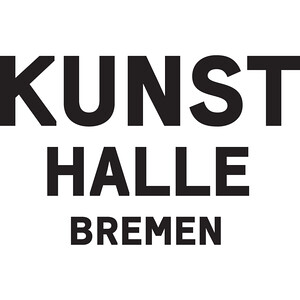Am Wall 207
28195 Bremen
Germany
June 2017–February 2018
This summer and autumn the Kunsthalle Bremen presents a rich variety of special exhibitions, ranging from surveys of the museums holdings of video and media art, a new series of drawings by Fernadno Bryce, an investigation of the history of the Kunsthalle during the colonial period to a major retrospective of Max Beckmann.
Auto Vision: Media Art from Nam June Paik to Pipilotti Rist (until September 3, 2017)
The Kunsthalle Bremen is home to an outstanding collection of media art from the 1960s to the present. This comprehensive exhibition presents a survey of its rich collection of film, video and electronic media art since the 1960s—from early one-channel videos to total sensual experiences in immersive installations. These include the seminal work Writing through the Essay ‘On the Duty of Civil Disobedience‘, 1985/91 by John Cage, the installation Room for one colour and windy corner by Olafur Eliasson, 1998 and Diana Thater’s Dolphins, 1999. Numerous works by the father of video art, Nam June Paik, including his iconic Video-Synthesizer, 1969/92 demonstrate the importance and range of the collection.
Fernando Bryce: Unforgotten Land (July 1 to November 19, 2017)
Fernando Bryce (born 1965 in Lima, lives and works in New York) has long been one of South America’s leading contemporary artists. In his work he reflects on global and geopolitical events of the 20th century. He culls archives for print material which he then reproduces, using his own, slow method of ink-on-paper drawings. He is less interested in reconstructing history than in revealing ideologically-loaded imagery and the power strategies used in print media and film. This exhibition presents a variety of recent works and a new cycle especially created for the show, which explores Bremen’s colonial history and its colonial revisionist tendencies after 1914.
The Blind Spot: Bremen, Colonialism and Art (August 5 to November 19, 2017)
During the 19th and early 20th centuries, the Free Hanseatic City of Bremen was a flourishing centre of rapidly growing international trade relations. It benefited both from colonial expansion and from mass overseas emigration. This global interdependence also left its mark on the Kunstverein in Bremen which was founded in 1823. A research and exhibition project sponsored by the German Federal Cultural Foundation focuses for the first time on investigating these complex colonial relationships. It links the history of the Kunstverein in Bremen to that of the city’s trading history and examines works by Paula Modersohn-Becker, Emil Nolde, Ernst Ludwig Kirchner and other artists in light of their colonial context.
Max Beckmann: The World as a Stage (September 30, 2017 to February 8, 2018)
Max Beckmann (1884–1950) was fascinated by the world of theater, circus, music halls and metropolitan cafes as metaphorical settings for human relationships and world affairs. In his œuvre, one finds numerous paintings, prints, drawings and sculptures which are concerned directly with these subjects and convey his idea of the world as a stage. This exhibition focuses on Beckmann’s idea of “world theatre” and illustrates how the painter and author of two hitherto neglected dramas viewed himself as a “theater manager, director and scene-shifter.”


